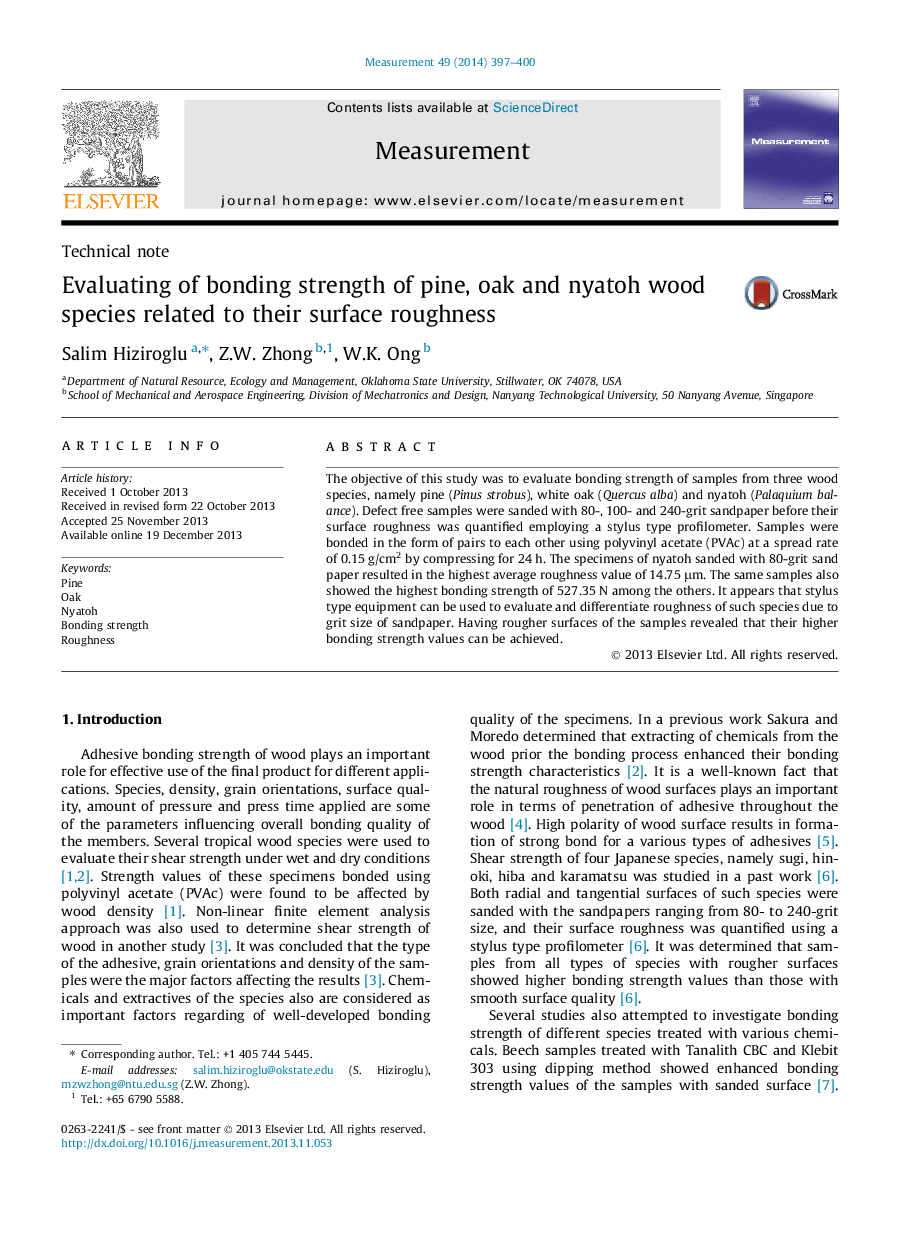| Article ID | Journal | Published Year | Pages | File Type |
|---|---|---|---|---|
| 727411 | Measurement | 2014 | 4 Pages |
•Specimens with rougher surface resulted in higher bonding strength values.•Overall surface roughness of the samples improved as a result of sanding above 180 grits.•Stylus type equipment can be used to evaluate surface roughness of such samples.
The objective of this study was to evaluate bonding strength of samples from three wood species, namely pine (Pinus strobus), white oak (Quercus alba) and nyatoh (Palaquium balance). Defect free samples were sanded with 80-, 100- and 240-grit sandpaper before their surface roughness was quantified employing a stylus type profilometer. Samples were bonded in the form of pairs to each other using polyvinyl acetate (PVAc) at a spread rate of 0.15 g/cm2 by compressing for 24 h. The specimens of nyatoh sanded with 80-grit sand paper resulted in the highest average roughness value of 14.75 μm. The same samples also showed the highest bonding strength of 527.35 N among the others. It appears that stylus type equipment can be used to evaluate and differentiate roughness of such species due to grit size of sandpaper. Having rougher surfaces of the samples revealed that their higher bonding strength values can be achieved.
